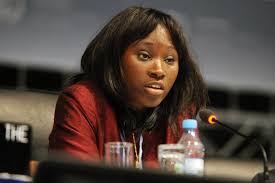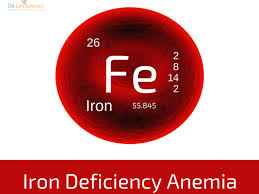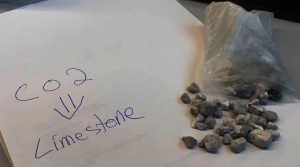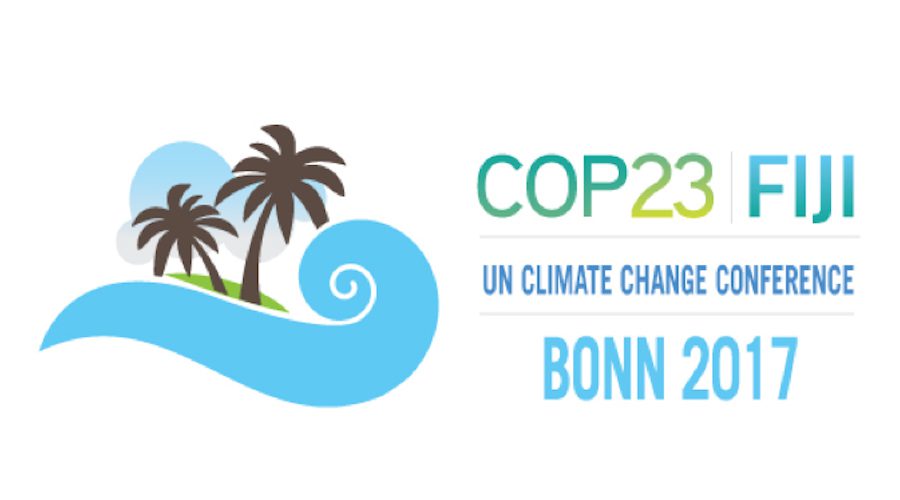This is a series of reports from guest contributor Alex Carlin about his observations from the 23rd annual “conference of the parties” (COP). All opinions expressed are his own. Please bookmark this page and check it for regular dispatches from the field about what’s happening on the ground at these negotiations. –Editors
SUMMATION BLOG
 November 25, 2017 — I have blogged for PR WATCH from Copenhagen, Lima, Paris, Marrakesh, and now Bonn. After the previous meetings I came away with a sense that, while we need to keep trying everything, our chances were slim. This year I got a big buoyant bounce, because my interviews revealed a plethora of pathways and scenarios that actually succeed in avoiding Climate Ruin.
November 25, 2017 — I have blogged for PR WATCH from Copenhagen, Lima, Paris, Marrakesh, and now Bonn. After the previous meetings I came away with a sense that, while we need to keep trying everything, our chances were slim. This year I got a big buoyant bounce, because my interviews revealed a plethora of pathways and scenarios that actually succeed in avoiding Climate Ruin.
Of course we must immediately slash CO2 emissions. We also need “negative emission technologies” to remove carbon dioxide directly from the atmosphere. In addition, we must restore the Arctic ice. We must do all three, or we fail to avoid Climate Ruin.
But, to illustrate a current controversy at the COP, if somebody were to invent a machine that in the space of 30 years could remove CO2 from the air all the way down to safe levels, but it was clear that Shell Oil and the other major CO2 emitters would seize on this information to justify their trying to excavate, sell and burn every last drop of oil gas and coal, arguing “we are free to emit CO2 because this machine will clean it up” – would you still want to employ the CO2 removal machine?
If this machine was proven to be safe, then my answer would be “yes”. Shell and its ilk are going to push for excavating, selling and burning every last drop of oil gas and coal in any case, so we must always anyway be relentless and extreme in our opposition to their CO2 emissions. But let’s not throw the baby out with the bathwater.
Its good news that negative emissions technologies are already ready for testing and even for deployment. Methods such as Russ George’s “Ocean Dust Replenishment” and Blue Planet’s limestone production stand out as promising examples (see my blogs below.)
The bottom line is, because our current CO2 concentration level of 410 ppm is so destructive, even if our emissions were slashed to zero very quickly, to avoid ruin we would still need to remove a lot of CO2 from the atmosphere. Indeed, all the scenarios presented by the IPCC that have survivable outcomes would not be feasible without including negative emissions technologies.
Another issue here in Bonn is about whether limiting our range of solutions to matters of physics, greenhouse gases, etc, will lead to failure if we do not pursue political and economic “system change.” Some say that even if we solve the dooming physical problems of Climate Ruin, such as overly high concentrations of CO2, the current system will always railroad us to the next dismal crisis.
Germany and other countries are still giving massive amounts of subsidies to fossil fuel companies, causing huge harm to the climate. “First Do No Harm,” the Hippocratic Oath, is being outrageously violated, while the entire mission of COP 23 is supposedly totally opposed to these harming subsidies. Is this deep hypocrisy evidence of a system that is utterly corrupt, inevitably destructive, and can never be reformed?
To understand this better, I knew just the right person to interview, Angus Joseph. I met this South African “artivist” and informational architect at the COP 20 in Lima in 2014. Smoothly articulate, he is a wealth of knowledge about the new currents in what “system change” might be in practical terms.
AJ: Although the songs of the 1960s the 1860s and the 1600s got us to this point, now is the time for action. Direct action is not the only way, but we are at such a desperate point, now is not the time for speeches.
AC: How would a new system succeed?
AJ: The problem is a corrupting centralized power, a power imbalance. We will campaign to decentralize, and skill ourselves by learning from groups doing this around the world, from Ende Gelände here, from others in Latin America, in Africa. Mushrooming horizontal self-organizing groups, learning about each other’s campaigns and tactics, so each node and point can grow more. We will make quick instant actions to stop emissions at the source, swarming. Young people who really see the realities of this coming world and the challenges we will face, they recognize this.
AC: What would happen if people swarm this coal mine? And what afterwards? How would they make it illegal to operate this mine?
AJ: There are a few options. There are a few people who still believe that institutional work can handle this nasty situation we are in. People like Polly Higgins, who are campaigning for “ecocide”, an institutional mechanism which says that if a “corporation”, which is a non-human entity, can have a legal representation, then surely something like a river or a tree or a species of animal can have the same rights. With “ecocide” we have to clearly identify these infringements against the Earth’s natural resources as environmental crime. Then we can see the interconnected nature of all the corruption. Operating this mine would then be a crime.
AC: When the non-centralized horizontal groups are ready to go, what is the next step? Should the big emitters be seen as the equivalent of child abusers such that they must immediately cease their activities? No more excuses like, “we have a right to make a buck”?
AJ: Yes, and its not even a matter of choice.
AC: Let’s give the Pentagon a new mission: to fight Climate Terror. The 101st Airborne would parachute over here and shut down the “climate terrorist coal mine”. Then our US Department of Defense at last would be doing real defense, this time actually protecting citizens at risk from a real threat.
AJ: Look at the “planetary boundaries” that we have already crossed. There are 9 of them and we have crossed 6 of them. For example, biodiversity, and acidity of the ocean. It doesn’t matter if you believe that humans are causing this climate problem, if you see that the planetary borders are being crossed by the economic activity driven by the capital mindset — then that is really forcing this system change.
AC: Where do you see us going at this moment?
AJ: Young people coming into this world see the dire need to protect the ecosystem. It is coded into them, not conceptual. Older people think it, but younger people feel it. So, as this movement grows, and as the older generation is pushed out from decision making positions and young people come in, I think we are going to see this amazing resurgence. But you never know when you are making history because you are always in the moment. These days, in this kind of resistance to save nature and fight capitalism, from a future perspective we might appear as something like how we look back now at the participants of the French Revolution or the Renaissance.
AC: Let’s suppose there is an end to Capitalism, what would come after that? Improvisation? Or is there some other ism that comes after that?
AJ: Good question. Based on the patterns of what has happened before, it would be this ism being replaced by another ism. But I think where we are different now from these previous iterations is the kind of informational technology tools that we have now. And the fact that we are so hyper-connected now. And the way technology is developing in this distributed decentralized way is really the difference. Finally each node in the world can be an equal node.
AC: About decentralization of the economy, is the Blockchain and Bit Coins, the new monetary systems, are they important?
AJ: Yes 100%. The Greed Machine has components like the Oil Machine and the War Machine, and money, the current version of money, is the lubricating fluid.
AC: How does Bit Coin stop the Pentagon?
AJ: Because it is not just a new money, it is a new value system
AC: Try to explain that to The American People.
AJ: It’s less about explaining than experiencing it. If back in the 90’s you tried to explain email to somebody who never used it they may not understand you at all. A new crypto-currency network is crucial because it allows for values like sustainability to be written into the rules. Having an earth-resource based economic policy, where processes and projects destroying Earth ecosystems will be heavily taxed, and companies and entities supporting life and biodiversity and regenerative processes will be rewarded by the network. It is possible to write these protocols into the DNA of a new economic model. Protocols are the rules of a system, so if we write in that “the coin” supports ecosystem restoration and rehabilitation more than extraction, the coin-network will reward this behavior.
Angus told me that one way to understand how this new monetary system can “stop the Pentagon”, or stop companies from ruining the climate, involves the “value token”. In my interpretation of a new crypto-currency system where all financial transactions take place on the blockchain, businesses that present the most dangerous threats to the climate, for example the Tar Sands in Canada, would be subjected to a vote by the blockchain and their “value token” could be revoked by a 51% “no” vote. If revoked, the project would cease because no financial transactions related to the Tar Sands would be possible.
My interview with Angus took place on our way to visit a place where his ideas are alive and thriving: the occupation of the Hambach Forest. Nicknamed “Hambi”, this forest is, to borrow from Churchill, an irony wrapped in a tragedy, but instead of a riddle, it provides answers.
THE AWARENESS IS GROWING
 November 20, 2017 — It is well known that the countries that have been the least guilty of causing Climate Ruin are suffering the most from it. The West African country of Senegal is a perfect example of this.
November 20, 2017 — It is well known that the countries that have been the least guilty of causing Climate Ruin are suffering the most from it. The West African country of Senegal is a perfect example of this.
I interviewed Madam Madeleine Rose Diouf, the Chief of the Climate Division at the Ministry of the Environment for Senegal. I asked her what she would most like to tell the American people.
She replied, “we call for America to be part of, and to contribute to the global effort. We expect them to take part with all the world.” She pointed out that while “we share the same atmosphere, some countries emit” the bulk of greenhouse gases, “and other countries are the victims.”
From that important framing, Mme Diouf assessed our level of progress as we deal with this challenge. “I have been to many COPS over the years, and its really nice to see this improvement,” including an impressive development of skills and understanding amongst the delegates and other participants. And regarding Trump, she senses that, both despite and because of his behavior, activities within the COP have more energy and force, and she noticed a “strengthening of the solidarity at the COP.”
Back home in Senegal the learning curve is also accelerating, as “people are committed more and more” to dealing with Climate Ruin. “Interest in climate change is rising in civil society and business enterprises. With knowledge and tactics the level is getting really high.” She mentioned the growing cooperation within the various “municipalities around Senegal where networking is growing around climate” and the environment in general.
Mme Diouf concluded, with a glowing glint of satisfaction, that both in the COP and at home in Senegal “awareness is growing.”
She said her nation is under a lot of pressure from Climate Ruin, including “floods, droughts, and reduced fish population.” With a voice full of soulful gravitas she started to outline the Senegalese response to this invading plague.
Towards removing CO2 from the atmosphere via photosynthesis from trees, “in Senegal people are talking and doing a lot about reforestation, planting trees, and restoring mangrove forests.” Interest and activity around the “use of biomass energy” is enduring. “With fisheries, we are protecting marine areas,” to hold on to what they still have.
Regarding the vitality of the fisheries, I asked her if replenishing iron in the ocean near Senegal was on the agenda. She said it was very interesting, and that “studying this idea and creating test areas” are her recommendations.
I told her I am coming to Senegal next week, and she assured me it would be a great trip. I plan to see for myself how things are progressing there, and to continue our discussion, this time on her own marvelous home territory.
GERMAN PROGRESS
 November 17, 2017 — A successful strategy of sustainability in the environment means you and your kids won’t be fleeing from your burning homes in Santa Rosa, or floating in your cars down on Main Street in Houston. With an eye to those recent results of unsustainable policy I was delighted to interview Harry Lehmann, General Director of Sustainable Strategies for the Federal Environment Agency of Germany.
November 17, 2017 — A successful strategy of sustainability in the environment means you and your kids won’t be fleeing from your burning homes in Santa Rosa, or floating in your cars down on Main Street in Houston. With an eye to those recent results of unsustainable policy I was delighted to interview Harry Lehmann, General Director of Sustainable Strategies for the Federal Environment Agency of Germany.
We talked about the protesters out on the streets today who were angry that Germany is still subsidizing coal, and asking “why Germany is not phasing out coal?” Harry had some good news to report.
Despite Germany’s achievement of renewable energy providing 40% of the total, until recently there has been almost no success with phasing out coal. Harry described three factors that have been driving the strong momentum of the coal business: 1) coal has been a lucrative business, very cheap to produce, selling a lot to other countries. 2) the liberal rules for the emissions trading schemes have been keeping the German coal business going strong because allowances are easy to buy, and 3) because they were making so much money, coal companies have been trying very hard to keep going for as long as they could.
Essentially, Germany has been operating under a free market (plus subsidies) for coal, and, until now, there was no way to stop the coal from being produced, sold and burned.
But now, “the good news is that the German society wants to phase out coal, so the new German government next year is going to enact a Climate Action Plan 2050” that will override the free market by requiring the coal companies to phase out coal by 2050. I would think that the protest movement was probably a big factor in this sea change.
Of course 2050 is maybe too late to avoid Climate Ruin, but since the new Plan finally has the power to control the menacing coal industry, the phase out process can potentially be accelerated as we move forward.
Next, we discussed Mitigation, the reduction of CO2 emissions. We agreed that radically slashing CO2 emissions is the main event, the absolute necessity for a successful outcome. However, in the event that we radically slash, we would still be staring 400 ppm in the face, which leads to Climate Ruin. So, I proposed having “300 ppm of CO2 by 2050” as a goal, and then figure out how to accomplish that, notwithstanding the fact that this would require utilizing negative emissions technology. COP/IPCC, of course, also uses negative emissions technology in their scenarios.
He replied that, in his view, “there are no negative emissions technologies currently able to reduce CO2 concentrations in the atmosphere.” In any scenario without negative emissions our climate will indeed change. So Harry proposed that we “must work on Adaptation,” that is, try to survive under conditions that are extremely difficult to survive under.
Preparing for a disastrous future is certainly prudent. But what about winning?
I asked Harry what would happen if I sent him an authoritative report that made a strong case that a specific negative emission technology is safe and effective. Harry assured me that he would check it, looking for flaws, looking for side effects, put it through an extreme vetting process, and if it passed muster he magnanimously guaranteed that he would submit it to the government.
He would do it with no fear of losing his job because there is a law in Germany, designed to protect the independence of his work, that says “people in my agency can not be fired.”
There are a lot of ideas for avoiding Climate Ruin swirling around, and Harry’s position is, “I don’t know everything, at the end Science decides.” I believe he is right about that.
But, in my view, the larger point is that we have an obligation to today’s children to plot a course for the same climate that we had a generation ago, a sustainable climate. Saying we can’t do that, saying we don’t know how to become sustainable, does not fulfill that obligation.
Harry concluded by telling me he liked this kind of interview because “good new ideas happen when people from other fields look at another field.” His positive demeanor and cheery sense of humor, along with an open intelligent mind, in a position of considerable influence over climate policies, made me feel that Germany is poised to make some big moves with their Climate Action Plan 2050. I will be looking out for that.
GREEN PARTY ICE
 November 15, 2017 — A stable livable climate is a chair with three legs: low CO2 emissions, low CO2 concentrations, and an Arctic with perennial ice. I explain the ice leg fully in this PRWatch article, but, to summarize, if we let the perennial Arctic ice become seasonal, the chair will topple, and we will ruin the climate.
November 15, 2017 — A stable livable climate is a chair with three legs: low CO2 emissions, low CO2 concentrations, and an Arctic with perennial ice. I explain the ice leg fully in this PRWatch article, but, to summarize, if we let the perennial Arctic ice become seasonal, the chair will topple, and we will ruin the climate.
With this ice in mind, I made my way to the Pavilions Area where many nations and regions have set up booths and exhibitions to demonstrate their contributions to solving Climate Ruin. I found my target — the Nordic Pavilion — people of the European Arctic Region who could offer a local perspective to this third leg of the Climate Problem.
I asked the facilitator at the organizing desk about who, in her opinion, would be the best person for me to interview about these Arctic matters. Her first choice was Satu Hassi, a Member of Parliament of Finland, Chairperson of the Environment Committee, a high ranking member of the Green Party. Ms. Hassi was scheduled to arrive the next day for a short talk there at the Nordic Pavilion. As I was thanking the facilitator for this information, she started pointing over my shoulder, and silently mouthing the words “that’s her! right there behind you!”
I turned, and, knowing that luck was on my side, I asked Ms. Hassi if she would grant me a short interview. She agreed and we ducked into the adjacent Russian Pavilion and started an interview that was a model of how excellent progress can be made here at COP 23.
I asked her if she agreed that we need to restore the Arctic ice. She began by saying that she was not qualified to answer, but that she could definitely state that the northern Arctic area of her nation was “losing a lot of areas of ice and snow,” such that it was “greatly reducing the albedo [the proportion of the sun’s heat that is reflected back out into space by a surface – the whiter the surface the higher the proportion] of the region, which means that the planet is absorbing more heat.” She continued that she was “not aware of any already functioning or tested methods of restoring albedo or the ice and snow cover.” She pointed out the danger of allowing this loss of albedo, and that it should cause us to “raise our ambitions for mitigation of greenhouse gas emissions.”
I compared mitigating emissions with directly restoring the ice, and I asked her if the Green Party was considering restoration. She said “we have not been discussing restoration, but we are discussing mitigation, which in this context means reducing emissions – that’s our primary task.”
But then she carried the argument forward by declaring that “mitigation and restoration are not ‘either/or’, not mutually exclusive. I think there are ecosystems that can be, to some extent, restored,” and she gave the example of restoring mangrove forests.
She reiterated that she was “not aware of proven methods for restoring ice and snow.” So I asked her if she was aware of any methods that were promising and in the development stage, while admittedly not proven but nonetheless valuable considering the urgency of the problem. She said she had heard of some methods that were like “science fiction, and I am not willing to talk about them because I have no idea if they are functioning or not.”
I pointed out that in the past, when the atmosphere had only 300 ppm of CO2, we might have been able to manage with a policy that was limited to mitigation, but today, with 400 ppm, if we only mitigate emissions, we will fail to avoid ruin. She again raised the level of the conversation by replying, “yes we need negative emissions.” I replied cheerfully, “ok, now we are talking!”
I asked her what the Finnish Green Party had to say about negative emissions. She said “the carbon sinks must be bigger than the emissions.” Again, we were getting somewhere. She offered that “soil and forests” can contribute, and that “it is important to stop deforestation.”
She drew the line at the year 2050 for when the carbon sinks must be as big as the emissions, adding that “we must get to zero emissions for energy systems” and “we need new innovations.”
I offered as an example of a new innovation Russ George’s idea of replenishing our sick oceans with iron, so that when the oceans regain their health they can draw down CO2 from the atmosphere. I added that, because the Earth is mostly oceans, ocean restoration can do a lot more good than land based restorations. I underlined that Mr. George has already proven in the field that his ideas work.
She said that she “was aware of this,” but she stressed that she is “a politician and not an expert.” However, the smiling look in her eye, and her charming tone of intelligence, gave me the impression that she was more than just simply aware of these things, rather she was ready to deftly and circumspectly discover and work out multiple solutions to Climate Ruin.
Our meeting had to end at that point, but I finished my train of questions by email. I asked her if she was aware of the technique for restoring the Arctic Ice that involves pumping sea water onto the existing ice?
She replied (with my answers in parentheses), “I have heard of this idea, but have not seen any scientific analysis on it. There are at least 2 question marks:
1) If you pump water on ice, that can also cause more melting of the ice. In which conditions does this actually work? The temperature of the air must at least be below zero, but how much below zero? (After the pumping you may get some melting from the now heavier ice sinking downwards into the water, but the overall effect will still be an important thickening of the ice. About the temperature I do not know exactly but the idea is to only pump during the winter so it will be quite a bit below zero anyway.)
2) What does the salt in the sea water do? Normal ice contains no salt. How does it change the “old” ice when a salty ice layer comes on it? Anyway in cold countries like mine salt is used on the roads to destroy ice which makes the road slippery. If there is a salty ice layer, does is accelerate the melting of the ice next summer? (The salt is not a problem because it forms itself into balls and falls downward into the ocean below.)
Since we have no viable alternative to restoring the Arctic ice, a rigorous search for the best way to do it should remain high on the agenda. I will be sending her another idea for restoring the ice called “ice911.” This involves taking ordinary sand and converting it to tiny glass beads that have a very high albedo. They not only sit on top of darkened slush and thereby improve the albedo there, they also float on the water and create a greatly expanded area of a very high albedo surface.
I want to see the bold and brilliant Finnish people lead the world, as they get involved in actions and solutions that pass their muster.
THE CLIMATE WILL BE RESTORED
 Nov. 13, 2017 — We find ourselves in a very positive situation here at COP 23. Have doom and gloom left the room?
Nov. 13, 2017 — We find ourselves in a very positive situation here at COP 23. Have doom and gloom left the room?
If we can bring CO2 concentrations down from 400 to 300 by 2050 then we can have a livable climate. For that, we will need to draw down about 50 gigatons of CO2 every year.
Half, if not all, of that task can be accomplished by the oceans. Currently they can not perform that task because they are iron deficient. But, after we replenish the ocean’s iron, the plankton will come back, the massive photosynthesis will reappear, and the ocean’s prodigious CO2 drawdown prowess will be restored.
The bulk of the remaining drawdown can be done with other benign processes, for example, making limestone (for concrete) using CO2, which can very plausibly result in 25 gigatons of drawdown per year.
The problem is that CO2 emissions must be slashed for this plan to work. But with the wind now at our backs from the euphoria of plausible drawdown, we have more power to intensify our campaigns to bring down emissions.
Pointedly, we must be extreme in our refusal to allow fossil fuel companies, meat industries, and other blocs of emitters, including ourselves, to use this emerging drawdown activity as a license to continue our civilization destroying emissions.
First, we should make sure that the IPCC changes its goal from “mitigation” to “restoration of a livable climate: 300 ppm by 2050.”
Under today’s dominant rubric of mitigation, the goal is to make the situation “less bad,” and this fosters us to accept unacceptable scenarios that lead to Climate Ruin. On the other hand, when the goal is to restore the climate to a safe one, then we are required to do everything we can to get to 300 ppm by 2050.
This forces us to realize an important bottom line: if we only work on emissions reductions we won’t get to 300 ppm by 2050, and if we only work on removing CO2 from the atmosphere we also won’t get to 300 ppm by 2050. Ergo, we must work on both simultaneously.
And this brings us to an additional benefit from the IPCC changing its goal to restoration. Reducing carbon from the atmosphere sometimes, ironically, raises undue alarm in the Environmental Movement. For example, in 2013, well intentioned green groups world wide learned that one scientist with 11 Native Canadians restored a large section of ocean by replenishing the iron, see this article, and they raised objections citing concerns about unwise geoengineering. Precious time is even now still being spent trying to explain that giving the ocean back its iron is no more dangerous than giving your mom Geritol when she is iron deficient.
However, if the IPCC changes its goal from mitigation to restoration, then the value of carbon reduction projects, or, say, restoring the Arctic ice, will become much clearer to the IPCC, because carbon reduction and Arctic restoration are major pillars of any good restoration plan. And then, since these green allies regard the IPCC as its primary authority, as the IPCC gives its stamps of approval we will no longer waste time fighting our friends in the Environmental Movement, and instead we will proceed full speed ahead with the restoration of our livable climate.
SOLVING CLIMATE RUIN IS CHEAP, EASY AND FAST
 Nov. 11, 2017 — Climate Ruin has a solution. The oceans. It’s almost that simple, and here is why, according to Russ George, an extraordinary scientist and civilization saver. His website www.russgeorge.net has extensive scientific backup for all the points you will be reading about in this blog.
Nov. 11, 2017 — Climate Ruin has a solution. The oceans. It’s almost that simple, and here is why, according to Russ George, an extraordinary scientist and civilization saver. His website www.russgeorge.net has extensive scientific backup for all the points you will be reading about in this blog.
Russ told me that the oceans, 50 years ago, contained an abundance of life forms, including the foundation of the food chain, plankton. These rich ocean “pastures” were doing a good job of pulling CO2 out of the atmosphere via plankton photosynthesis, and also cooling the planet via plankton’s catalyzing the greater formation of white clouds that reflect the sun’s heating back into space, known as “albedo”.
However, today, the ocean pastures have lost half of their flocks of fauna and flora, including tragically, half their plankton. This is because high CO2 concentrations in the atmosphere these last 50 years have led to greener world wide land surfaces, resulting in far less iron rich dust being swept by the winds from the land surfaces into the seas. This iron deficiency has caused a huge deficit of plankton.
Fortunately, if we were to restore the ocean pastures to their former iron rich state, they would remove so much CO2 from the atmosphere, and they would cool the planet so much, that, coupled with radical emissions reductions, we could avoid Climate Ruin.
And the astounding thing is, restoring the health of the ocean pastures is cheap, easy, and fast.
Russ says that this restoration only requires iron rich rock dust to be spread on the surface of the ocean. One large ship sailing year round for 5 years spreading dust would be sufficient.
In his own words, “the simple fact is that the oceans have become and are becoming ever more desolate blue deserts. This is happening because the vital mineral micro-nutrients they require for their ocean “pasture grass” to grow, their phyto-plankton, is missing, as dust in the wind has been drastically reduced due to global greening effects of our high and rising CO2.”
The key ingredient to that dust in the wind is iron. Replenish that iron, and the plankton comes back fast, bringing with it the photosynthesis which draws down the CO2.
And here is the next astounding Russ George fact: he has already made a strongly successful demonstration of this ocean pasture restoration.
As reported in the National Review in 2013, “In 2012, the British Columbia–based Native American Haida tribe launched an effort to restore the salmon fishery that has provided much of their livelihood for centuries. Acting collectively, the Haida voted to form the Haida Salmon Restoration Corporation, financed it with $2.5 million of their own savings, and used it to support the efforts of American scientist-entrepreneur Russ George to demonstrate the feasibility of open-sea mariculture — in this case, the distribution of 120 tons of iron sulfate into the northeast Pacific to stimulate a phytoplankton bloom which in turn would provide ample food for baby salmon. The verdict is now in on this highly controversial experiment: It worked. In fact it has been a stunningly over-the-top success. This year (2013) the number of salmon caught in the northeast Pacific more than quadrupled, going from 50 million to 226 million. In the Fraser River, which only once before in history had a salmon run greater than 25 million fish (about 45 million in 2010), the number of salmon increased to 72 million.”
About cooling the planet, Russ adds, “Ocean pastures and their blooming plankton are the primary source of clouds on this blue planet, and the cloud sustaining work of healthy ocean pastures is today dramatically diminished. Restoring the ocean pastures will restore cloudiness, and indeed those plankton formed clouds are the whitest and brightest of all clouds, so they were and can be again, in fact, the greatest part of earthly albedo, now greatly diminished due to loss of the ocean blooms. The return of the blooms will result in the immediate return of massive amounts of immediate earth cooling albedo.”
What about the severe problem of ocean acidification? Russ explains that when ocean H2O combines with CO2 you actually do get the acidic H2CO3, and this does cause ocean acidification. But, the beauty of replenishing the iron is that it results in a much higher level of photosynthesis, and, when that happens, new life, our all important plankton, gets created, rather than acidic H2CO3. This is a great way to solve the problem of ocean acidification.
If we were to only slash CO2 emissions, the 400 parts per millions of CO2 currently in our atmosphere would ruin our climate in a matter of decades. However, if we couple the slashing of emissions with a replenishing of ocean iron, then in a matter of decades, we would be well on our way to a livable climate. And as a bonus, fish populations would become much higher, providing desperately needed food to the victims of our current spate of famines.
No need for doom and gloom. Replenish the iron. Its cheap, its easy, its fast, and it works. And it feeds the starving. What are we waiting for?
DON’T GROVEL, GRAVEL!
 Nov. 10, 2017 — The Climate Drama is full of scenarios that don’t avoid Climate Ruin. The deal breaker is the difficulty of removing CO2 from the atmosphere. Sometimes it seems like there is no way to win.
Nov. 10, 2017 — The Climate Drama is full of scenarios that don’t avoid Climate Ruin. The deal breaker is the difficulty of removing CO2 from the atmosphere. Sometimes it seems like there is no way to win.
But then, today at COP 23, I interviewed the astonishing Peter Fiekowsky.
It starts with gravel. Blue Planet has come up with a way to capture CO2 and convert it to gravel — carbonate rocks that are identical to limestone — that are used in place of natural limestone rock mined from quarries, which is the principal component of concrete.
Today we have a world wide demand for this gravel that is 54 gigatons per year. 54 gigatons of gravel made by Blue Planet’s system means 25 gigatons of CO2 gets removed from the atmosphere. If we can remove 50 gigatons of CO2 per year for 20 to 30 years, then we can avoid Climate Ruin.
What about the other 25 gigatons? Peter had that plan as well in his bag of tricks.
The oceans give us that 25 gigatons, in 2 parts. One part involves fertilizing the oceans with iron dust, which results in photosynthesis pulling massive amounts of CO2 out of the atmosphere and into the ocean where it forms a carbon detritus that falls somewhat under the surface or all the way to the ocean floor, and it won’t reappear in the atmosphere for a millennium.
The second part of this will be “upwelling” nutrients from the depths of the ocean which will also have this effect of making the surface waters much more fertile, with the same pulling effect on CO2.
Peter gave me some details about the gravel, which he calls “aggregate”. “It would take 15 to 20 years to scale up to 54 GT per year. The pricing is competitive because most of the cost of aggregate is transportation, and Blue Planet can manufacture the aggregate from CO2 near to where it’s needed, which means they can do it cheaper. Quarries are getting exhausted and sometimes aggregate must be shipped thousands of miles now. They expect that states will require that roads be built with low or negative carbon aggregate, accelerating the transition in a conservative industry. California is doing that now. Blue Planet’s first commercial scale plant is opening in March in California . Their aggregate is being used in a terminal expansion at SFO airport now.”
But Peter is making a more strategic point as well. He points out that this COP process is about “mitigation” – that is, how do we make things “less bad”. Peter has an organization called the Healthy Climate Alliance. Their mission statement says “We, as a society, have accepted 2 degrees (increase from pre-industrial times) as a goal, even knowing that it will be catastrophic for future generations.” He says that kind of goal leads to Climate Ruin, and therefore we must change the goal to “restoration – our goal is to leave a healthy climate for our children.” His premise is revolutionary: bringing CO2 concentration down to 300 by 2050 is absolutely feasible, and it will actually restore the climate to a healthy state. His message is, in effect, stop saying we can’t do it, and let’s get to work implementing the things that get it done.
Part of the work are a couple of “white papers” in process, from RAND, and from Arizona State University, which will give a needed scientific grounding to this 300 ppm by 2050 goal. These papers should be published in a few months. After that, climate policy makers, funders, and activists from all corners will have all the tools they need to put us back on track to survive as a civilization.
The news is in, no more doom and gloom. CO2 can be removed from the atmosphere. The only thing that can thwart us would be if, in our carbon removal euphoria, we failed to slash CO2 emissions.
HANSEN’S LAST CHANCES
 Nov. 9, 2017 — The COP/IPCC process can give the misleading impression that reducing emissions alone can avoid Climate Ruin. But the scenarios that have emerged from the process tellingly involve plans to remove CO2 from the atmosphere. These scenarios include CO2 reduction because the Paris emission reduction commitments are a far cry from being sufficient to avoid Climate Ruin. COP/IPCC tries to bridge that gap by including plans to remove CO2 from the atmosphere, and thereby make the climate math more consistent with staying below 2C.
Nov. 9, 2017 — The COP/IPCC process can give the misleading impression that reducing emissions alone can avoid Climate Ruin. But the scenarios that have emerged from the process tellingly involve plans to remove CO2 from the atmosphere. These scenarios include CO2 reduction because the Paris emission reduction commitments are a far cry from being sufficient to avoid Climate Ruin. COP/IPCC tries to bridge that gap by including plans to remove CO2 from the atmosphere, and thereby make the climate math more consistent with staying below 2C.
This is an indication that CO2 removal is unavoidable at this point. But which versions of carbon removal are being considered, and when do we need to implement them?
To get a better handle on this, I asked an uberexpert who has been doing terrific work in this area, James Hansen.
My question: Dr. Hansen, many people conflate C02 “emissions” with “concentrations.” That is, they act as if by radically reducing emissions we will radically reduce CO2 ppm concentrations back down to a safe level.
Is it fair to say that, in the event that we actually radically reduce emissions to near zero:
1) Oceans and forests will not draw down CO2 ppm fast enough to avert Climate Ruin?
2) Other natural processes will not draw down CO2 ppm fast enough to avert Climate Ruin?
Hansen replied: “This is quantified in Young People’s Burden,” a recent paper which argues that “if phasedown of fossil fuel emissions begins soon, improved agricultural and forestry practices, including reforestation and steps to improve soil fertility and increase its carbon content, may provide much of the necessary CO2 extraction.”
However, if we delay taking action, this “necessary CO2 extraction” becomes ruinously expensive and difficult.
As Hansen ominously puts it:
“In contrast (to a rapid phasedown), continued high fossil fuel emissions today place a burden on young people to undertake massive technological CO2 extraction if they are to limit climate change and its consequences. Proposed methods of extraction such as bioenergy with carbon capture and storage (BECCS) or air capture of CO2 have minimal estimated costs of USD89–535 trillion this century and also have large risks and uncertain feasibility. Continued high fossil fuel emissions unarguably sentences young people to either a massive, implausible cleanup or growing deleterious climate impacts or both.”
So, Hansen is describing a “last chance” to avoid Climate Ruin by slashing emissions very soon, and coupling that with serious and massive CO2 reduction actions. He is saying that both must happen very quickly if young people are to avoid a nightmare future.
Hansen’s “improved agricultural and forestry practices, including reforestation and steps to improve soil fertility and increase its carbon content” is also a last chance: to utilize more natural technologies before it becomes necessary to, for example, invent machines to remove carbon from the atmosphere, or more desperate measures.
It may already be time to invent and implement those carbon removal machines. The debate we need to be having right now is about these competing forms of CO2 reduction, or “drawdown,” equal and in parallel to the already vigorous and worthy debates about emissions reductions.
DRAWDOWN
Nov. 6, 2017 — As COP 23 fires up in Bonn I would like to correct a misleading flaw in the message of the COPs, and in the statements of most of the leading advocates of the Climate Movement.
The Climate Problem has two pillars: CO2 emissions and CO2 concentrations. The thing that will actually do us in at the end of the day will be a high CO2 concentration level. Right now we are over 400 parts per million (ppm) of CO2 concentration in the atmosphere. Sustained over decades, that level of concentration will cause a nightmare that we can’t wake up from. But the choruses we hear sung by the COPS and most green groups is “reduce emissions.” Yes of course, and emphatically, we absolutely must slash emissions very fast if we are to draw down concentrations. And I heartily applaud everyone who pushes this point.
But the general public is receiving a message that is misleading because emissions reductions are conflated with concentration reductions. That is, we get a steady stream of statements that imply that the concentration problem would somehow get solved by emissions reductions.
For example, Michael Mann, the “hockey stick” professor who has done so much fantastic work on climate, recently was quoted by Think Progress as saying “We will have to retreat from New York City and the major coastal cities of the world at almost unimaginable cost,” warns Mann, unless “we decrease carbon emissions immediately and dramatically.”
But, unfortunately, today’s currently existing CO2 will stubbornly maintain its killer CO2 concentration level despite emissions reductions. Without a way to actually take carbon out of the atmosphere, even if “we decrease carbon emissions immediately and dramatically,” our lingering CO2 concentration level would still force us to abandon New York City.
Perhaps if we had slashed emissions starting in the 70’s, when ppm wasn’t so high, and forests and oceans still had undiminished powers of CO2 drawdown, maybe then we could have successfully managed this crisis by cutting emissions alone. During this COP I will be discussing these negative trends in the abilities of forests and oceans to act as “carbon sinks” and draw down CO2. But today, sadly, slashing emissions alone is unlikely to bring ppm down to a level that will avoid Climate Ruin. We have, as we speak, a ruinous concentration level of 400 ppm. Who in the Climate Movement is talking turkey about how that level would actually come down at all, even if we miraculously slashed emissions to zero tomorrow?
Some, indeed, are talking turkey. I profile a few in this recent PRWatch article.
And, importantly, Paul Hawken has produced a magnificent book called “Drawdown.” He goes through a lot of examples of things that can help bring down ppm. But these discussions of how to draw down ppm are far too rare – its past the time that they must equal the felicitous impact of the ongoing world wide discussions about emissions reductions.
I believe that drawdown needs to start immediately or we are cooked. Where’s the plan? Are Climate leaders consciously avoiding this issue because they strategize that we must first focus only on emissions and then, later, tackle drawdown? Do we really have enough time left for such a strategy? These will be major themes of my blogs during this COP.
Stay tuned.



You’re on the money. Stay there!
Thanks for ferreting out the truly promising developments in Bonn.
Jim Hansen is being evasive when he says that emission reduction and agricultural carbon removal, “may provide much of the necessary CO2 extraction”. CO2 levels now are 120 ppm above pre-industrial, and by 2050 it will be 170 ppm above if we stay on the Paris agreement path (which Al Gore indicates is likely, and I agree). Rapid emission reduction and the carbon removal that Hansen discusses would reduce that from 170 ppm down to 150 ppm– 20 out of 170. He can call that “much”, but that is also misleading. It’s 12% of what’s needed. I’d call that false hope.
We need massive carbon dioxide removal (50 Gt CO2/year), 10-20 times more than Hansen discusses. Is it worth figuring how to do that? Should we take seriously the people who say they can do it, or should we say it’s “unlikely to work”, and continue withholding funding?
What do you think?
OK. I will try not to talk turkey. Slashing carbon emissions will mean a reduction in economic growth. You cannot replace an economic surplus that is generated by burning 300 million years of sunlight. There is no other form of energy to take the place of fossil fuels that is as condensed, high-density and transportable.
A reduction in economic growth does not just mean that Exxon, Shell, Total, BP go bust. The stock price of every single major company is correlated to the fossil fuel economy. They will dip less than the oil majors but they will still dip if they no longer have access to cheap energy. A contraction in global GDP will mean less money to fund health care, pensions, social security etc. And less money to fund the military – I am not a hawkish type but think what Russia, Iran and Saudi Arabia might look like without any revenues from fossil fuel? If any one of those turned into a failed state, the EU would be foolish not to set some money aside for military spending. And given the US isolationist turn that would probably have to be more than we currently spend.
I still believe we should slash our carbon emissions since the cost of not doing so would be even higher. But let us at least start by admitting that going green is not some simple click of the fingers where wind and solar allow us to live identical lives to those we are living now while simultaneously lifting another couple of billion people out of poverty.
Once we have that on the table we can discuss the rest.
In a global economy with significantly less surplus cash and where certain core services (health care, social security, education, military spending) need to be maintained are we going to opt for high-tech expensive solutions that have never been tried before and will almost certainly end up having unexpected consequences? Or do we opt for cheap, low-tech solutions like planting trees and regenerating soil, even if we know that they will not be able to absorb carbon fast enough to counter the worst effects of global warming?
It is not a pleasant choice to have to make but we don’t get anywhere by not being honest with ourselves. There are solutions but they all come at a cost.
I agree that CO2 drawdown, probably by direct air capture, is the most important and urgent technical and engineering goal for the human race, and must be given the highest priority. CO2 emission reduction is just not going to work. It is not working now and it will not work in the future. I discuss this in my book “A Farewell to Ice” (UK: Penguin, US: Oxford Univ Press). This is a plea for more people to read it!
Good article Alex.